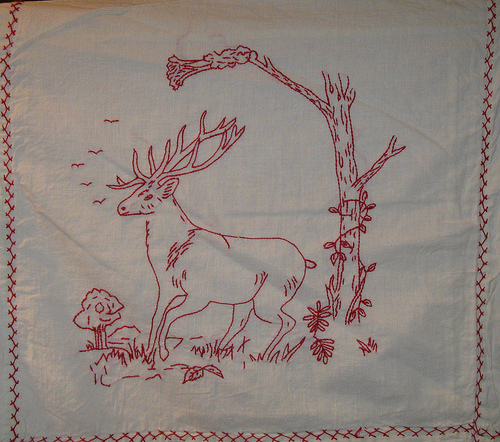
Even with the resurgence in needle crafts in the last decade or so, redwork is still lagging in popularity. This craft first began in the 1900s, when artisans in Turkey figured out how to make a red embroidery thread that was colorfast. This meant that crafters were free to use the red thread in their embroidery without the dye bleeding all over everything.
Blackwork was already an established form of needle craft at the time. It was particularly popular with upper class Victorians, who had something of a fetish for embellishing anything that held still long enough. Blackwork used black embroidery thread, and featured geometric patterns that were used either on their own (like the repeating geometric patterns found in Fair Isle knitting) or to fill in other designs.
By contrast, redwork is all about the outline. Redwork became popular among the working class partly because of the easy availability of "penny squares." These were pre-printed squares of fabric which came with a small skein of cotton floss that you could buy together for a penny at the dime store. Many people made a lot of penny squares and then sewed these up into quilts which today fetch high prices at auctions.
Frankly, I'm surprised redwork isn't more popular. It's simple compared to many other forms of embroidery, since you only need one color, it only requires learning one (maybe two or three) kinds of stitches, and you only have to trace a printed design. It also has a lot of flexibility, in that you can create your own designs easily by drawing on the fabric with any number of tools (including a pencil) depending on your needs. And the graphic impact of a collection of redwork pieces is stunning. This seems like the perfect craft to revive for the modern age!
Image courtesy Flickr/Minnesota Historical Society

0 comments